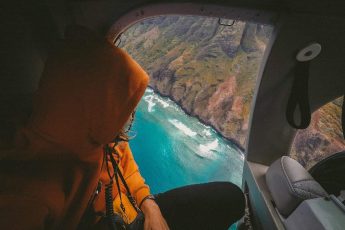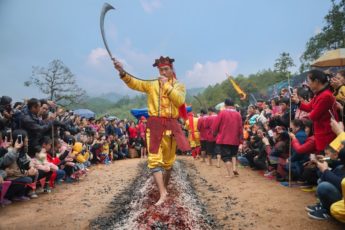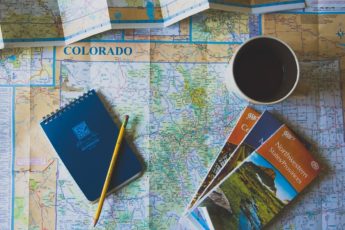Few natural phenomena in the world trigger the imagination the same way the Northern Lights do. For the Vikings, The Native Americans and the Inuit people, their haunting appearance was an ethereal reflection, an eerie sight of dancing spirits – and a reflection of ghosts.
And you know what?
Seeing the pulsating green (sometimes scarlet!) glow dance across the sky really is an otherworldly experience. There is no question as to why just glimpsing at the Northern Lights tops people’s bucket lists, and the growing number of questions on how, where and when to see them grows exponentially!
The greatest show on Earth comes with a lot of prep, however. Contrary to popular belief, the Northern Lights are a mystery that you need to unravel. In the end – it all boils down to four important factors: what, where, when and how.
One thing is for sure, though: The Northern Lights will leave you breathless. That’s why I’ve created this ultimate guide that’ll take you through everything you need to know so you can plan a trip to see Mother Nature’s brilliant magic trick.
So, what exactly are the Northern Lights?
Having occurred long before mankind ever did, the Northern Lights have long been a spectacular amalgamation of myth and mystique. Only recently has modern science deciphered what they are, turning what once was an inherent fascination woven into tales and legends into some surefire facts.
It boils down to collisions between some electrically charged sun particles as they enter our atmosphere. Usually, they appear by the northern and southern hemispheres above the magnetic poles.
What color do they come in?
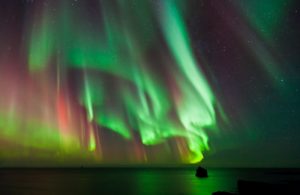
Despite the fact that you’ve probably seen the “green tint” traversing the Internet, there are plenty of different hues and colors. Pink, red, yellow, blue and purple are also quite common. It all depends on the gasses in the air.
Enough facts, when can I see the Northern Lights?
The thing about the Northern Lights is that they’re super unpredictable. They do happen all year round, but you need to be extremely lucky to see them without prior planning.
It’s not just about a certain month or season, it’s also about the surrounding conditions. You’ll need dark, clear conditions to see them and you need a lot of solar activity. Now without really mentioning – you’ll have little to none control over any of these.
The prime season is during early Autumn and Spring.
- From September to early April – the darkness in Iceland is usually all-engulfing and cultivates the perfect conditions to see the Northern Lights. November and February are especially popular times because of the long nights that allow more time to view the lights.
- December and January are usually the darkest months – meaning you won’t have to wake up early or stay up late to see the lights in Iceland. You can go out to check the lights at 5 p.m. or 10 a.m in the morning and it will still be dark.
- You’ll need to keep in mind, however, that these are usually the coldest months – so pack accordingly!
- If you’re thinking whether or not you can see the Northern Lights in the summer, think no more. You cannot! There is literally no darkness in summer. As in, there is midnight sun from May to July, making it almost impossible to see the lights.
What other conditions do I need to see the Northern Lights?
As mentioned above, it’s not just about the weather. There plenty of conditions you need to keep in mind.
Solar Activity: High.
The Northern Lights become visible when there is higher solar activity. This is the most unpredictable of factors, but it’s also the only main condition that you need to see the lights. There are Aurora forecast sites (that I will list below in a different section) that accurately predict solar activity. So don’t worry, no technical research needs to be done on your part!
Weather conditions: Clear sky.
When you arrive in Iceland, it’s best to give yourself a week or two. Closely monitor the cloud movement, because thick clouds will make it impossible for you to see the Northern Lights. Even just a few clouds can absolutely ruin the experience.
Light conditions: Darkness is your best friend!
Make sure you get out of the city to avoid any well-lit places.
Location: flat areas, or viewpoints.
I’ve also included where the best places in Iceland are for you to enjoy the view. As a rule of thumb: make sure there are no mountains or buildings around you blocking the view.
Where can I see the Northern Lights in Iceland?
Iceland is definitely the place to go to catch the Northern Lights, and it’s the place where most travelers have already seen them. It’s a winter paradise with plenty of other stuff to do as well, so you’ll have no shortage of things to experience. If you love yourself some frozen glaciers, then you’ve got Crystal Caves, if you love hot springs then you’ve got the Blue Lagoon, and if you love yourself a little bit of adventure then you can glacier hike, rent a snowmobile, go dogsledding or even skiing.
- Þingvellir National Park – This UNESCO World Heritage Site is the prime location from where you can catch the Northern Lights. It’s also incredibly easy to find a spot that is isolated amongst the dramatic landscapes of the place.
- Seltjarnarnes – This is another narrow peninsula offering wonderful views of the Northern Lights.
- Vik – At the quaint town of Vik you’ll find an effortless blend of sandy beaches and the Northern Lights. All you’ll need to is sit back and enjoy the view juxtaposed with the sound of rushing waves.
- East of Iceland – If you want total isolation, then this is your spot! The Northern Lights will be on display amidst a wide landscape where there usually is more sheep than people!
- Seljavallalaug Pool – This spot is super Instagram worthy! One of the oldest hot spring houses in Iceland is surrounded by soaring mountains and acts as the ultimate spot for viewing the lights.
- Reykjavik – If you’re not planning on leaving the city, then you can also enjoy the lights from the middle of the city. The Grotta Lighthouse can be reached on a beautiful coastal walk and has a significantly low level of light pollution.
Northern Lights Forecast Apps and Websites.
Vedur Aurora
The Vedur Aurora website is an incredible source of information and forecasts. It’ll give you all the information needed for Norway, Sweden, and Greenland too.
Aurora
This app will pretty much give you everything you will need: the solar activity, the solar wind, images of the sun, and detailed forecasts of when you can see the Northern Lights. It’ll also tell you how great of a chance it is to see the aurora.
Northern Lights Alert.
This app depends more on people rather than forecasts. For example, if someone sees the Northern Lights, they send a message that they are visible and you’ll be sent the exact location on your phone! You’ll also get to see how the activity of the Northern Lights, and how long it’ll take you to get there.
How to photograph the Northern Lights:
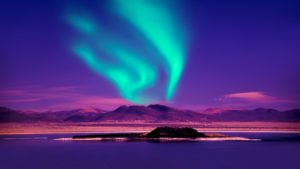
You know that feeling when you think you’ve taken a stunning picture, only to check it and realize it’s subpar at best? Yup. That’s what a lot of travelers complain about when they see the Northern Lights for the first time. They are sometimes hardly visible in pictures, and it takes a little bit of tweaking to get it right!
What you’ll need:
- A DSLR camera.
- A steady tripod. This is the most important part because you’ll be setting the shutter speed to 15 or 20 seconds.
- Make sure your camera has a manual mode so you can easily set up your ISO value, F-stop and shutter speed.
How to see the Northern Lights in Iceland.
There are plenty of different ways you can see the Northern Lights in Iceland. Those options usually fall under two categories: trekking on your own, or going on a tour. If you would much rather be alone and one with nature, venturing off into the darkest areas of Iceland and catching the lights – then go for it!
However, if you want just a little bit more mobility and less planning on your side (and more safety, obviously) then I highly recommend taking a tour.
Different types of tours:
- Boat tours: You can choose anything from big boats to yachts, and it gives you the quickest access to the darkness. Plus, the boat ride itself is an experience on its own, since seeing the Northern Lights soaring from the ocean is an otherworldly experience.
- Big Bus Tours: I’ll be honest with you – this would not be my preferred option of travel. However, if you’re on a budget, then this is definitely the most budget-friendly option. One advantage to going on a big bus tour is that they can “chase the lights” instead of having to move in one direction like a boat would.
- Super Jeep Tours: This is the most common type of tours and they always get to go to areas that are hard for vehicles to reach! It’s also the most action-packed off of all the other options.
Fun Facts About The Northern Lights
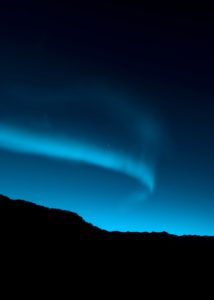
- Did you know that you could experience the Northern Lights from Jupiter and Saturn? Great idea for some future trip planning if you ask me.
- The Inuit Tribes and the people of Nunavik Island had the same myth regarding the Northern Lights but with opposing details. The Inuit tribes thought that the Northern Lights were spirits playing a ball game with a skull of the walrus. The people of Nunavik Island thought the opposite. As in, they thought that two walruses were playing a ball game with the head of a spirit!
Top tips for visiting the Northern Lights in Iceland:
- My most important tip for you is: be patient. Trust me, the determination and patience will pay off.
- Dress very warm because the nights when the temperature drops below freezing are the nights you’re probably going to end up seeing the Northern Lights.
- I recommend not driving, but if you have to, make sure you stay safe and take care of the slippery road.
- Don’t forget your tripod!
- Plan to spend anything from a week or two so you can give yourself a chance to see the Northern Lights.
What to pack:
- Icelandic weather is quite harsh, especially during the winter. Bring thermals, heavy jackets, thick socks, gloves, and ice caps.
- Stay warmly insulated, and bring windproof clothing.
- Bring snacks with you when you’re going to see the Northern Lights.
- Layers, layers and more layers!
- Your camera gear.
Seeing the Northern Lights is definitely worth all the planning it takes! It’s one of those experiences that you don’t get to have all the time, making it all the more special!





